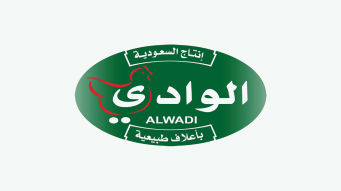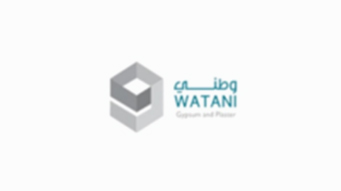
The use of reverse osmosis technology in the pharmaceutical industry
Water treatment in the pharmaceutical industry is very complex and essential in the production of medicines that save millions and millions of lives around the world. Reverse osmosis technology can meet any water treatment standard.
Where water is one of the most important pillars of the drug industry. It is used in the preparation of medicines, as well as in the washing operations that take place in production lines. Since the medicine must be free of any pollutants or substances that interfere with its active ingredients. Every ingredient in it, including the water, had to be of exceptional purity for therapeutic use.
Water treatment solutions for the pharmaceutical industry include:
- Systems of water disinfection
- Water filtration systems
- DI water system
- Industrial ultrafiltration
Using the latest water treatment systems used in the pharmaceutical industry to enhance manufacturing productivity and reduce costs. Without prejudice, of course, to the security and quality of product development. Every aspect is maintained to high-quality standards and in tune with the needs of the market.
The importance of water in the pharmaceutical industry
Unlike other industries, water is mainly used in liquid form (or cleaning agent) in the pharmaceutical industry. And not just as an ingredient. It is, therefore, necessary to produce highly distilled water, disease-free water, and water for injection in compliance with international pharmaceutical standards.
As our knowledge of our customers’ needs grows, so does our competence in developing high-quality water filtration systems for the pharmaceutical industry.
Importance of reverse osmosis technology in water treatment
While taking vitamins is important for overall health, the high amount of chemicals, radioactive metals, and pharmaceuticals in drinking water should keep you up all night.
Since conventional pharmaceutical water treatment processes have proven to be largely ineffective in removing pharmaceutical contamination from drinking water, reverse osmosis systems have become the primary purification system used in this process.
Reverse osmosis has shown to be the only water filtration system that can eliminate virtually all pharmaceutical contaminants.
Advantages of building and designing a reverse osmosis water treatment plant in a pharmaceutical factory
- Increase performance and reduce cost
- Ensure excellence and agreement with the manufacturing
- Provide correct and specific measurements
- Clean confirmation for quick and accurate verification of process controls
The water used in the pharmaceutical industry is divided into:
PW Purified Water
It is the water used for the purposes of preparing drugs that are not taken by injection, as well as washing the components that come into contact with these drugs and their production lines.
Water for injection (WFI)
It is the water used in the preparation of injectable drugs, as well as the washing of components that come into contact with this type of drug and its production lines.
Pure Steam
It is the vapor produced from highly purified water from impurities, which when condensed can be used for injection water purposes.
First: Purified Water
This water is used in the production of liquid medicines that are not taken by injection, in the washing of tanks for their preparation and production lines, as well as in the washing of production lines for powdered medicines, pills, and others.
This water can be obtained from a production plant consisting of a primary treatment unit for the raw water source, whether it is municipal water or groundwater consisting of sand and carbon filters and softeners. Then a reverse osmosis unit (RO) to remove dissolved solids (TDS) and obtain a suitable electrical conductivity for the water to enter the electrical removal unit For EDI ions, the final specifications for this water according to the American Standard USP are as follows:
- Electrical conductivity = less than 4.3 µS/cm
- pH=5-7
- Bacterial count = less than 100 CFU/ml
- Total organic carbon = less than 0.5ppm
The most important part of the purified water production plant is the electro-deionizer unit. Which removes ions from the water leaving the reverse osmosis units using cationic and anionic membranes. They work as electrodes using an electric current that forces the ions to pass out of the unit in the rejected water stream, and the purified water comes out for use.
Second: Water is used for injection, which is used as a carrier of drugs into the body. Or as a solvent or diluent for medicinal compounds used in the preparation or washing of production lines.
And the final specifications for this water according to the American Standard USP are as follows
- Electrical conductivity = less than 1.3 µS/cm
- pH=5-7.
- Bacterial count = less than 10 CFU/ml
- Total organic carbon = less than 0.5ppm
- Endotoxins = 0.25 (IU/EU/ml)
This type of water can be obtained using the aforementioned purified water or distillation units designated for that.
Non-distillation RO method:
Where the system is designed to reach American specifications in terms of reducing electrical conductivity and bacterial count. By using reverse osmosis plants, membrane desalination, nanometer filtration, electrical deionization, thermal sterilization, ozone sterilization during storage, and ultraviolet lamps on the lines, all to ensure the quality of the produced water.
Method of distillation
Where the state of water (purified) is changed from liquid to vapor. To obtain water free from any ions, impurities, or non-volatile organic materials. The distillation units consist of a series of columns in which the water state is changed to the steam state. Followed by condensation of the steam to obtain the water used for injection.
The purified water used to obtain the water used for injection is heated by heat exchangers. The steam produced from the first column is used as a heating medium for the water in the second column, which is transferred to it by pressure. It is thus condensed into the water used for WFI injection and evaporation in the second column, and so on.
Raw materials and storage
These materials must be made of materials that do not interact, do not corrode, and do not absorb water. And do not affect their quality in any way. Among these materials are stainless steel grade 316 or thermoplastics such as Polyvinylidene Fluoride (PVDF) or Polypropylene (PP).
In terms of storage and distribution to points of use, the system must be designed to ensure that areas of pressure loss and water flow are reduced. Maintain routine constant thermal sterilization with pure steam or superheated water. Or maintain constant chemical sterilization to reduce bacteria formation and maintain water quality.
Purified steam, is the saturated steam produced from water free of additives and non-condensable gases. It is also called clean steam. And when the pure steam is condensed. We get water that conforms to the American and European specifications for the water used in the injections as mentioned earlier.
It is obtained by using a pure steam generator designed on the basis of a vertical column with a heat exchanger in the lower part (evaporator) and a steam separation chamber at the top. The unit and all its components must be made of high-quality stainless steel to ensure the quality of the pure steam produced.
























